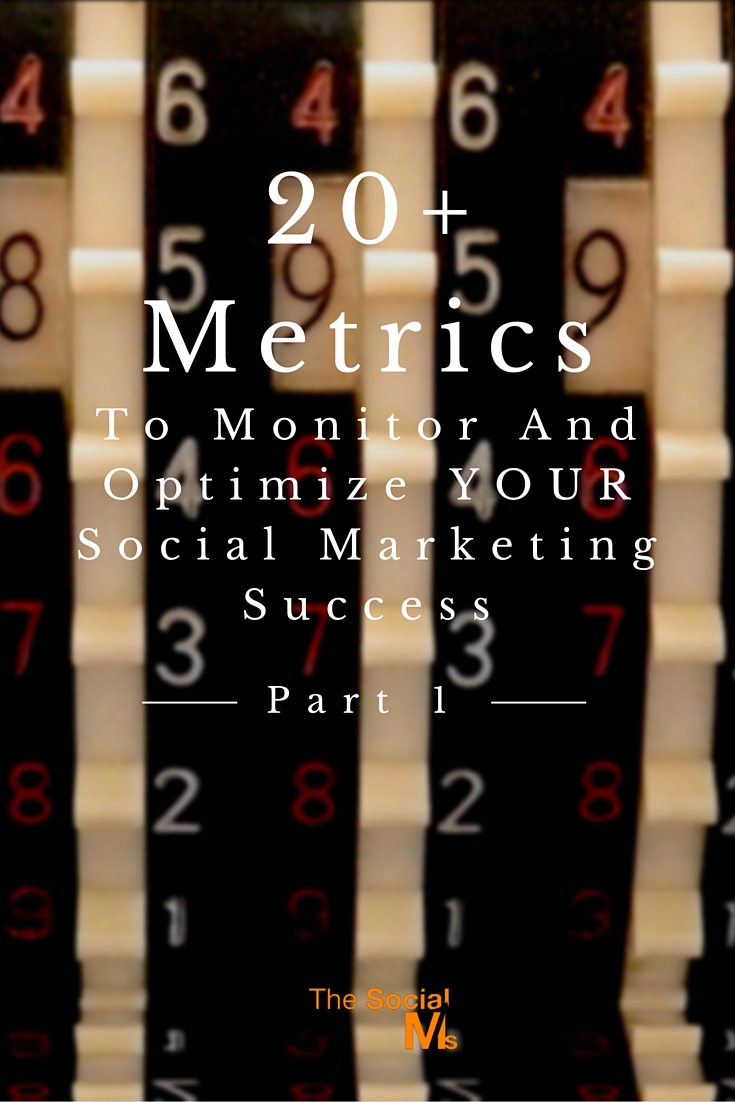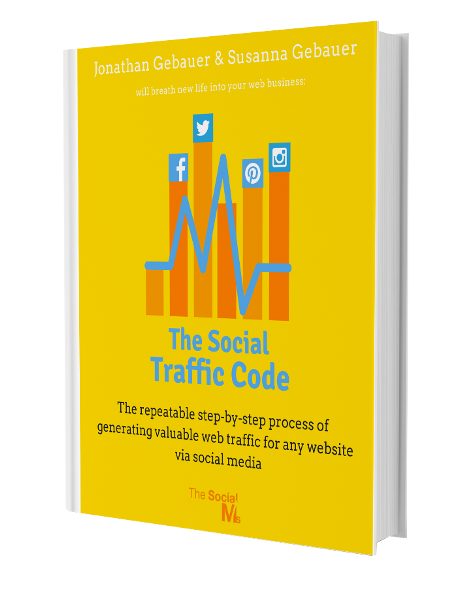Social Media Marketing is a lot about numbers. If you do not watch out for some metrics and how they develop over time, you are basically flying blind. And most often one day the bitter awakening will come when you realize that you have spent so much effort on something that is not paying off as it should.
Watching metrics, monitoring and reports are not a vanity sport that marketers do for bragging.
It is necessary to figure out what works and what does not. And even more, metrics can help you identify glitches and flaws in your marketing strategy, they can give you insight over your customers, their behavior and their preferences.
Metrics and the art of responding to the stories the numbers tell you are the magic weapon that turn a simple administrator of social media accounts into a prolific master of the more sophisticated social media techniques – and even enable you to develop your own particular marketing methods based on data.
Before you read on - we have various resources that show you exactly how to use social networks to gain massive traffic and leads. For instance, check out the following:
FREE Step-by-Step Twitter Marketing GuideFREE Pinterest Marketing Ebook
To give you an idea of how many numbers there are to watch and how much to analyze and interpret here is the first part of a list of 20+ metrics, you should have heard of – the second part is going to follow.
Traffic and Social Engagement Metrics
Social Media and online marketing success start with attracting and engaging an audience and driving traffic back to your website. Here are some important metrics to watch in this process.
1. Number of Followers
This is one of the first metrics you need to watch. Without an audience, you will not be heard.
While the number of followers (or fans) in the end may rather be a vanity metric – you do need some followers otherwise you will spend your time talking to yourself.
The number of followers in any social network is a good metric to watch when you are starting out. It tells you if your activity and the content you share is providing value to an audience. However, it does not answer the question, if this audience is your target audience.
The danger is to stick to this metric for too long. The number of followers may well become a vanity metric after a while. Other numbers are much more important in the long run.
You can either watch the number of followers in the network itself and note it down every few days. Or you can use the insights which some networks provide. Twitter Analytics or Facebook Insights will tell you how your fans and followers developed in the past.
2. Number of interactions
Many people in social media go for engagement with their audience in social media. They are looking for interactions rather than followers and count how often people liked/favorited, shared/retweeted or commented on a post. This is relevant for Facebook there is no doubt about that since Facebook decides how often it shows your updates to your fans based on the number of interactions.
Shares are also important when you want your content and activity to get noticed outside your existing audience. If you go for growth of your social accounts, shares can help you spread the word.
Hey, before you read on - we have in various FREE in-depth guides on similar topics that you can download. For this post, check out:
FREE workbook: CREATE AWESOME BLOG POSTSFREE Beginner's Guide: START A BLOG
Still, this number on its own does not guarantee success. Many people retweet on Twitter without clicking on the shared link first. Many people chat on social media while they never visit your site.
3. Clicks on shared links
If it is traffic to your website you are looking for, you need people to click on the links you share in social media. And the hard truth is, that many people like, share, favorite and retweet without even taking the time to click on your link and check what they are actually sharing.
While shares and retweets help you spread the word they only pay in traffic if people also click on the links you share.
It is an art, to craft updates with the right text (and picture) for your social media accounts to make people click on your links. You can easily check this in Twitter and try different tweets for the same link. Some Tweets will inspire retweets, some will get you comments or favorites – and some will get you clicks. The art is to find the perfect text for your social update, which gets you shares and clicks.
4. Post Reach
This is a tricky metric. Many people believe that the reach in social media equals the number of followers. That is not true for many reasons. Many of you may know by now, that Facebook does not show your updates to all of your fans, but decides how many of your fans get to see your updates based on a complicated algorithm which takes your average fan interaction rate into account. Thus Facebook reach became a little famous.
But reach is not only relevant on Facebook. Your average tweet will also not be seen by all of your followers: It depends on who and how many of your followers are online at exactly the time when you tweeted. The average lifetime of a social media update has a strong influence on your reach. On Twitter, this is only a few minutes.
There are more factors which influence your actual reach, like how many lists you are on.
5. Website traffic
Whatever the reason for your marketing activity, the chances are high that you have one or more web pages you want to drive traffic to. And many people are using social media for precisely this reason: to drive traffic to a website.
It does not matter if it is a blog or a landing page, a sign-up form or a sales page. If you spend time and effort on getting people to this website, you want to know if you succeeded – and will have to watch your website traffic and most likely you want to see it grow.
6. Traffic per traffic source
This is one of the more important numbers to watch and it can answer a lot of questions. If you are spending time on growing an audience on Twitter and the traffic to your site coming from Twitter does not increase, maybe you are targeting the wrong people? If you are spending money on advertising your Facebook Fanpage, but your traffic from Facebook does not grow, is it worth the money? If you see a new traffic source, did someone mention you in a blog post? If you see a sudden spike in traffic, maybe some of your content was picked up on Reddit?
To figure out which of your activities really pay of, you will have to break down your traffic by traffic source.
7. Mobile traffic
Are your visitors viewing your site from mobile devices? If so, you should double-check how your site looks on mobile. Make sure, your visitors can find everything they are looking for on the device they are using. If you see a lot of mobile traffic, it may be worth to invest in optimizing for mobile even if your website is already responsive.
8. Traffic per page
My guess is, you do not have one single page online. We have been blogging for over a year now, and have published over 150 blog posts. It is a huge help to monitor the traffic we get to one page (blog post). It helps to figure out what content and which topics our audience likes and which posts work best in what network. You can even use your best post to drive traffic to some of your other sites by simply including a link to your best posts.
If you know what works well, why not add some more content around these topics or post types?
Join our free Email Course to learn how to start your social media marketing journey:
All the basics in 4 Days, 4 Emails
9. Best types of posts
This is not only relevant for your own website but if you have different types of posts you should definitely take the time to analyze what types of posts work best with your audience. (Be careful to define what it means if a post works well – is it the traffic it gets, the time visitors spend on the page or the actions it inspires?).
It is no secret that for instance, Facebook treats different post types in a different way, based on their insight on what people like. The best post types for yourself depends on what you want to achieve. Some post types attract more comments, others more shares, and the next more clicks. Use the post types which work best for what you want to achieve.
10. Average time on site
There are many reasons to monitor how long your website visitors stay on your site. If you manage to lure people to your site you want them at least to take a thorough look at what you have to offer on that site. If people leave your website after the first glance, you obviously fail to get anything from them. In that case, obviously your message in social media worked, but you failed to provide enough value on your website – or your targeting was wrong.
Plus, Google also rates the time people spend on a site if this is too short it is an indicator for Google that the website is not good or attracts the wrong audience.
11. Cost per click/visit
If your goal is to drive traffic to a website, it is important to know what it costs you to get a visitor to this site. If the costs are too high, your marketing strategy is obviously not optimal.
This number is often used in relation to advertising. But even if you drive traffic from social media without paying for advertising, it may be worth to consider the cost per visit. If you have to pay one full-time person to post in several social channels, create content, etc. and only get a handful of visits to your site, you may want to consider your options for changing something.
12. Pageviews per visit
If you only have one page online, this number is superfluous. But if you are active in online marketing you most likely have a ton of pages. A visitor who clicks from one page to the other and stays on your website to take a look at several pages is likely to have much more interest in you and what you have to offer than a person who leaves after taking a quick look at one page. There are many options to get people to view more pages, starting with placing some links to other pages on your site. If people want more information, make it easy for them to find it.
Yes, you have to watch your numbers. But staring at these numbers day in and day out and nothing ever happens as you planned it is not so motivating.
To prevent that we can teach you the one process that helped us grow traffic to two businesses. Our first business got over 500k pageviews per month based on the process we show you in this book.
Do you want to know how to build a social audience and generate reliable Social Media Traffic?! “The Social Traffic Code!”
More and more metrics to watch
As you can see, there are many metrics, you can and should watch in order to figure out if your marketing efforts are paying of. The above metrics are only a first part of a much longer list of metrics, which you should at least have heard of.
In the second part of this list of metrics, we will take a closer look at some metrics, which help you put your results into perspective to your activity – and some more conversion-oriented metrics.
(You can find the second part of this list of important metrics in this post.)




